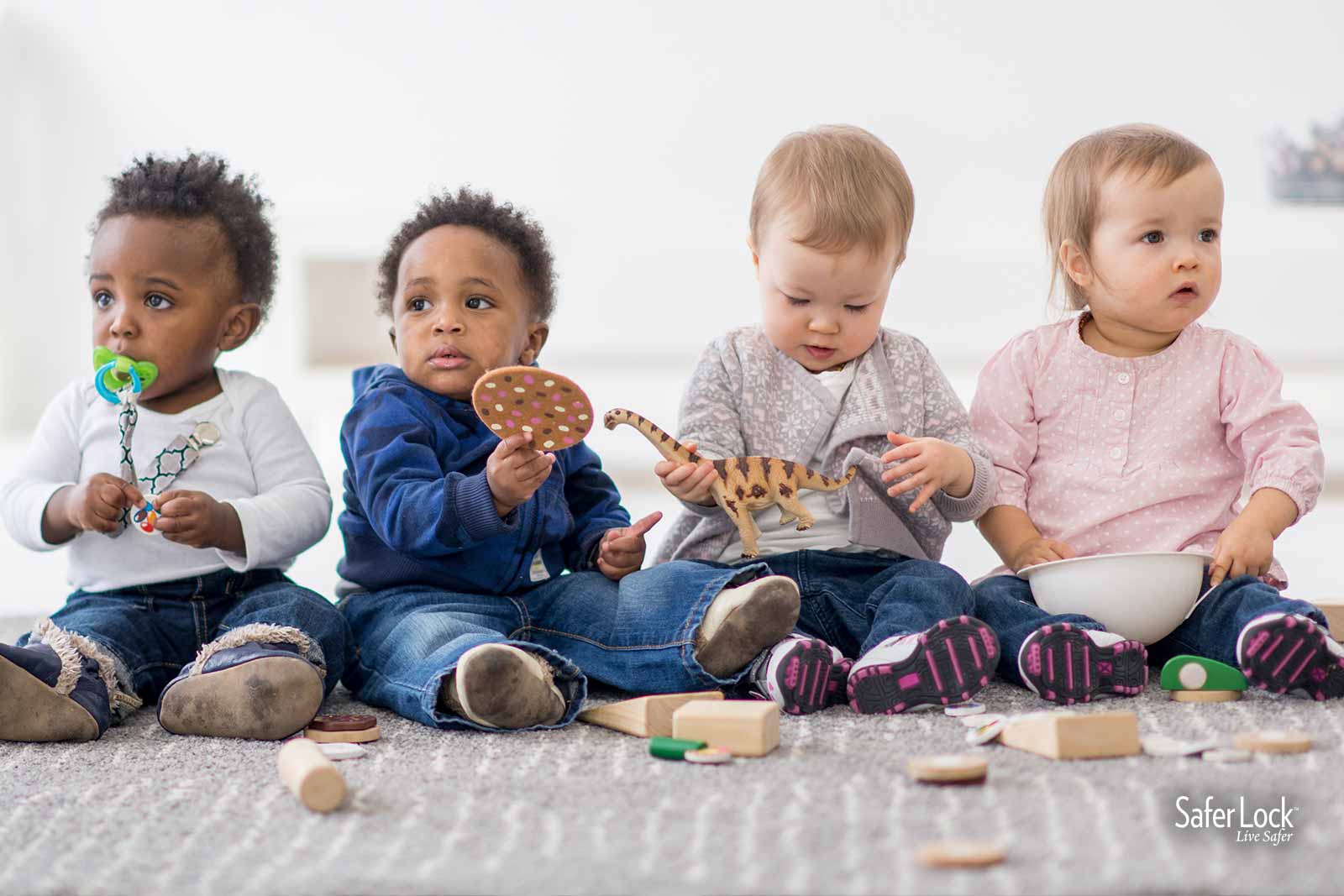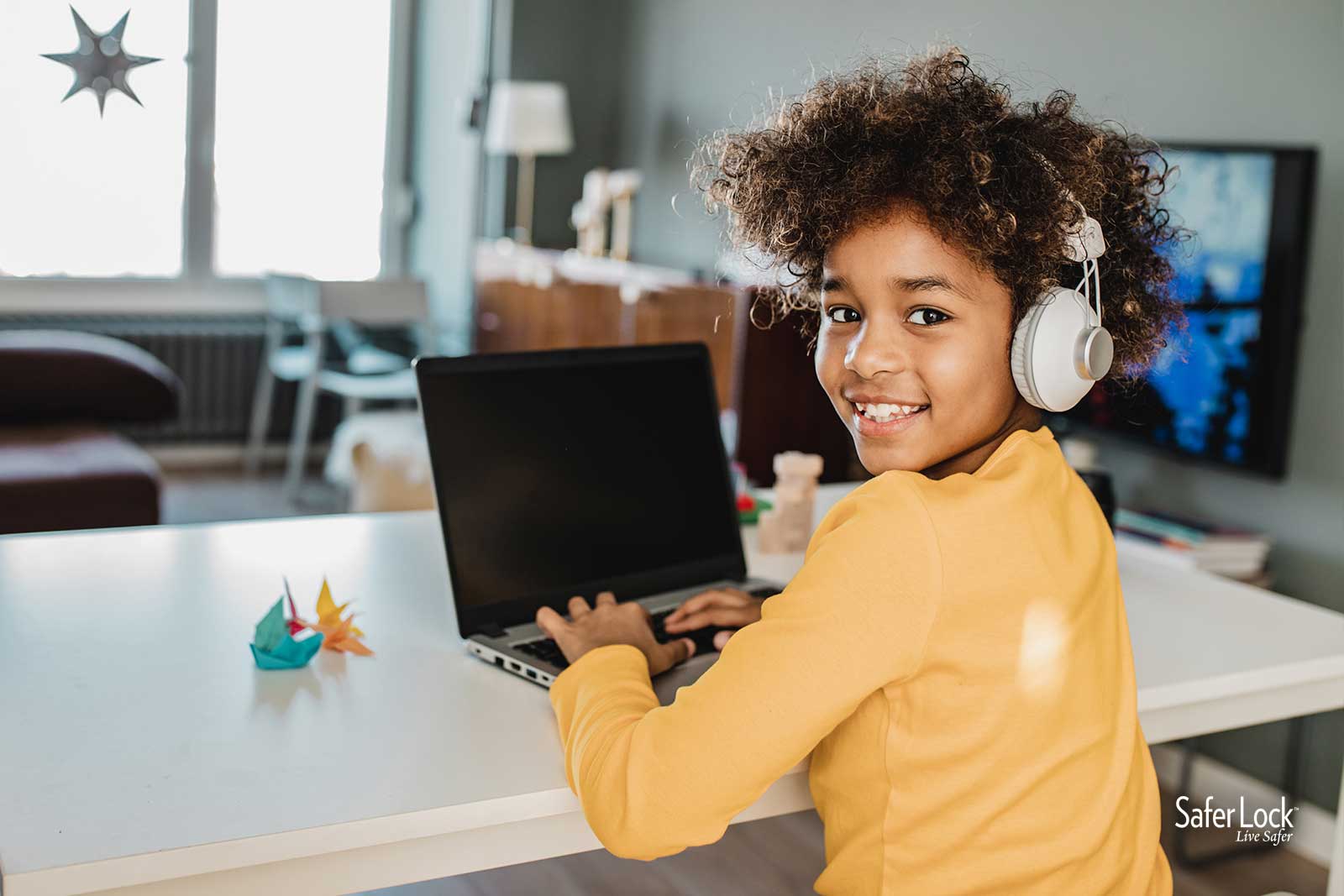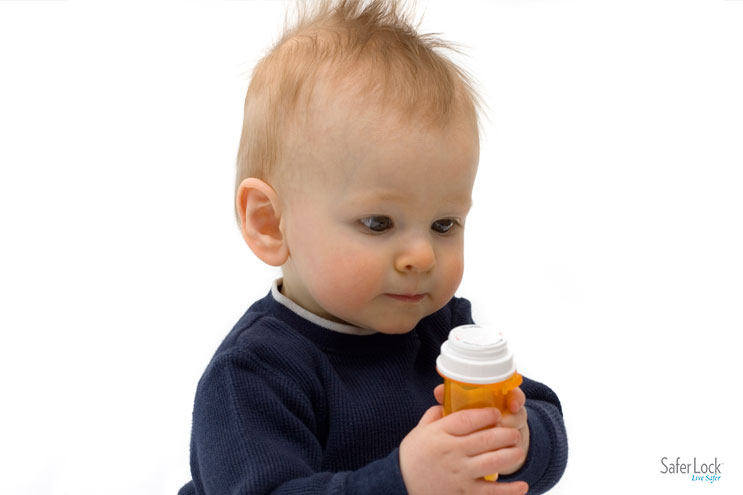September is Baby Safety Month. Whether you’re an expecting parent eagerly awaiting the arrival of your little one or have already brought your baby home, having an understanding of baby safety is critical.
Protect Your Baby By Focusing on these 5 Areas of Baby Safety
These five areas are crucial when it comes to preventing accidents and injuries to your baby. Use the following tips from Safe Kids Worldwide to help keep your baby and young children safe inside your home and out.
Sleep Safety
The leading cause of death for children younger than one year old is unintended suffocation, which means sleep safety should be at the top of your baby-safety list. Nearly 3,500 infants die each year from sleep-related incidents, such as suffocation, strangulation, entrapment, or SIDS (sudden infant death syndrome).
- Place babies on their backs for naps and at night until they are 1 year old. Make sure babies sleep on a firm, flat surface in their own crib, bassinet, or play yard.
- Choose a firm mattress and fitted sheet for baby’s crib. Remove toys, blankets, pillows, bumper pads, and other accessories from the crib.
- Dress baby in a wearable blanket, onesie, or similar clothing for every sleep. A loose blanket could cover baby’s airway or increase their body temperature.
- Share your room, not your bed. Place baby’s crib or bassinet in your bedroom instead of letting baby sleep in the same bed with you.
- Follow the manufacturer’s instructions to assemble your crib. Make sure to complete and submit the product registration card to learn about any recalls or safety updates.
Medication Safety
Medications are the leading cause of poisoning deaths in children aged 14 and younger. Approximately 165 kids — the equivalent of four school busloads of children — are seen in emergency rooms for medication-related treatment every day in the U.S. More children are brought to emergency departments for medication poisonings than for motor vehicle occupant injuries.
95% of all medication poisonings occur when a child ingests medicines while unsupervised (only 5% result from an incorrect dosing error made my caregivers).
The child-resistant packaging that comes standards on medications won’t keep a young child from opening a powerful medication bottle. In a shocking TODAY report, a group of children under the age of 4 were able to open up a variety of OTC and prescription medication bottles within minutes … or even seconds.
- Always put medicines and vitamins away after every use. Never leave them on the counter between dosings. Don’t be tempted to “keep them handy” in a purse, backpack, or briefcase, or in an unlocked cabinet or a drawer within a child’s reach.
- Secure powerful medications in a medication lock box or locking pill bottle. Don’t rely on “child resistant” caps to keep kids out.
- Always read and follow label instructions when giving medicines to children.
Only use the dosing device that comes with the medication.Never use a household utensil, such as a teaspoon or tablespoon, to measure medication. - Up to 20 percent of pediatric poisonings involve a grandparent’s medication.Make sure that all medications in the child’s environment are stored out of reach and out of sight.
- Program the nationwide poison control center number (800-222-1222) into your phones.
Car Seat Safety
More than half of all car seats aren’t installed correctly, which is a travesty considering road injuries are the leading cause of death for children across all ages in the U.S. Simply installing a car seat correctly can increase your child’s chances of survival in a car crash by 71%.
Using a properly installed car seat is the best way to keep your child safe in the car.
- Buying the right car seat: Your baby needs to ride in a rear-facing car seat as long as possible until 2 or more years. When your child has outgrown that seat, you are ready for a forward-facing car seat. Get more details about buying the right car seat for your child.
- Installing your car seat correctly: You’ll need to decide on using either the seat belt or lower anchors to secure your car seat. Both are safe but don’t use them both at the same time. Once your child is forward-facing, it is important to use the tether with the seat belt or lower anchors.
- Getting the right fit: A properly-fitted harness gives the best possible protection for your child. Here are more details about getting the right fit for your child.
- When to change your car seat: Look on the car seat label to make sure your child is still within the weight, height, and age limits for that seat.
Download the Safe Kids Worldwide Ultimate Car Seat Guide to learn more about car seat safety.
Burn & Fire Safety
Fire and burn-related injuries are among the top ten causes of unintentional injury in children ages 5 and younger; kids younger than 2 are at the greatest risk.
- Create a kid-free zone. Teach younger children to stay at least 3 feet away from your cooking space. If you need to watch babies while cooking, place them in highchair outside of the kid-free zone where you can see them.
- Keep hot objects out of children’s reach. Cook on the back burners of the stove and turn pot handles away from the edge. Keep hot foods and drinks away from the edge of your counters and tables.
- Teach older children how to cook safely. Make sure they don’t leave the kitchen while cooking and use oven mitts or potholders to carry hot pots and pans.
- Check bathwater temperature. Before placing your child in the bath, check the water temperature on the inside of your wrist. The water should feel warm to the touch, not hot.
- Watch children around fireplaces. When a gas fireplace is turned on, the glass is extremely hot and can take more than an hour to cool down after it is turned off. Keep children away from the fireplace to prevent burns from the hot glass.
And don’t forget that burn safety means fire safety, too. Nearly 87% of all fire-related deaths result from home fires. Working smoke alarms can reduce that death rate by 50%, so make sure yours are functioning, tested, and have fresh batteries. Learn more about fire safety.
Fall Safety
Falls are the leading cause of non-fatal injuries to kids, accounting for over 50% of non-fatal injuries for babies under one year old. While a fall may not be fatal, a fall can still be disastrous for your young baby. Infants under 12-months have more fragile skulls, making falls more risky.
- Keep babies and young kids strapped in when using high chairs, infant carriers, swings and strollers. When placing your baby into a carrier, remember to place the carrier on the floor, not on top of a table or other furniture.
- For your crawlers and climbers, move chairs, cribs and other furniture away from windows to help prevent window falls.
- Baby walkers can be dangerous, so try using a stationary activity center. These items give your baby a chance to practice standing and moving more safely. Look for one that is on a stable, non-moveable base and place it away from stairs, hot appliances or window cords.
- If a baby is in a walker at home, the baby must be actively supervised at all times. Walkers can easily fall down stairs, tip over or help your child gain access to hazards in the home.
- Secure TVs and furniture to the wall using mounts, brackets, braces, anchors or wall straps to prevent tip-overs.
- Screens are meant to keep bugs out, not children in. Properly install window guards to prevent unintentional window falls. For windows above the first floor, include an emergency release device in case of fire.
- Use approved safety gates at the tops and bottoms of stairs and attach them to the wall, if possible. Remember to read the manufacturer’s instructions and warning labels to make sure you have the right gate for your needs. Not all gates are safe for use at the top of the stairs.
- If you are placing your child in a shopping cart seat, use a harness or safety belt. If the belt is missing or broken, select another cart.
Baby Safety is Critical Every Month of the Year
Baby safety is an important topic in September, but keeping your baby safe should be your top priority all year long. These top five causes of injury and death are a great place to start when baby-proofing and safety-proofing your home. Follow Safe Kids Worldwide to learn more about preventing injuries and accidents in your home.



